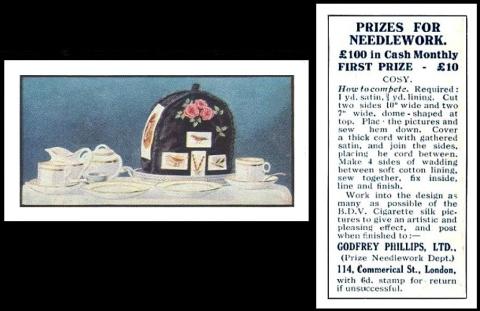
The clue here was rather a hidden one - for it was what was in the pot, beneath the tea cosy, which I am sure confused many of you, and in this case it was tea.
Tea - and coffee - are excellent for putting in compost, though you should tear (or cut) the tea bags up to save rotting time. If you ask at your local coffee shop, they will probably be quite happy to give you used coffee grounds for free (our local Waitrose actually puts them in a dustbin in the foyer and you just help yourself).
What these substances to is add nitrogen, a valuable fertiliser for the future, which is packed with nitrogen to encourage growth, especially of foliage.
The one thing you need to know though is not to put pyramid style tea bags in your compost. Some are biodegradable, but most are made from plastic, and even though it is derived from corn, it is no use to compost. Also, if you use the kind of tea bag that has a dainty swinging string outside your cup note that it is held there by a staple, and that staple should go in the rubbish bin, not the compost.
Now this set is more or less a promotional item, it simply shows an item with silks attached, and the reverse offers "£100 in cash monthly. First Prize £10". The text then tells the reader how to make the item shown, including the measurements and materials required, closing with an exhortation to "Work into the design as many as possible of the B.D.V. Cigarette silk pictures to give an artistic and pleasing effect and post, when finished, to GODFREY PHILLIPS Ltd. (Prize Needlework Dept.) 114, Commercial Street, London, with 6d. stamp for return if unsuccessful."
Now if you look at our card you will note something very interesting and that is the address, where it reads "Commerical" - not Commercial. Does this error appear on any other cards from this set?
In our original reference book to the issues of Godfrey Phillips (RB.13, published in 1949) this set is described as :
116. PRIZES FOR NEEDLEWORK. Small cards, size 68 x 37 m/m. Unnumbered. Fronts printed by letterpress in colour. Backs in blue, with details of prizes for needlework utilising B.D.V. silks. Thought to have been issued in 1925, but date may have been earlier - a reference to prizes given for needlework appeared in the "Daily Sketch" of 11th Sept., 1915.
There then follows a list of the subjects, which is
- 1. Baby`s Blanket
- 2. Bag
- 3. Bed Cover
- 4. Bedroom Shoes
- 5. Biscuit Box
- 6. Blotter
- 7. Boudoir Jacket
- 8. Cloak
- 9. Cosy
- 10. Cushion
- 11. Dressing Gown
- 12. Fancy Dress
- 13. Fire Screen
- 14. Handkerchief Sachet
- 15. Lamp Shade
- 16. Parasol
- 17. Photo Frame
- 18. Pyjama Case
- 19. Sideboard Cloth
- 20. Table Cover
- 21. Telephone Cover
- 22. Toilet Cover and Three Mats
- 23. Waste Paper Basket
- 24. Work Bag
- 25. Work Stand
Now there is method in my madness of typing these out long hand rather than scanning it, and that is so that we can add in any extra information about the silks that were shown on the cards.
This would be especially important in proving whether or not they were issued in 1915, or in 1925, or even in both years, with the later set being a straight reprint. There is a very valid point for thinking they were issued in wartime, too, which is that simple, repetitive, tasks, like needlework, were considered to be beneficial for recuperation of forces personnel who had been damaged in the war.
In our World Tobacco Issues Indexes, none of this remains, though there is a link to the former Godfrey Phillips reference book. The text in the original volume reads :
PRIZES FOR NEEDLEWORK. Sm. 68 x 37. Unnd. (25) See RB.13/116.
The main text is the same in the updated version, but for one change, that being because we have an updated reference book to the works of Godfrey Phillips and its associated companies, which is coded RB.113 - therefore the new listing closes with a link to RB.113/116 instead of the code above.
